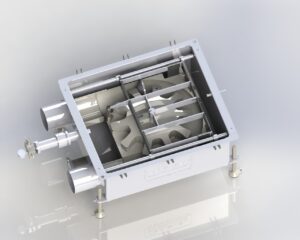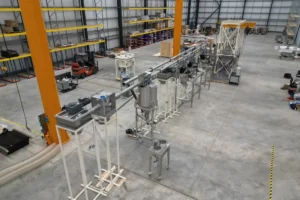Food safety has a goal to increase safe food handling, storage, and preparation. Food handlers should adhere to food safety guidelines and routines to avoid health hazards and keep their consumers safe. It’s best to follow a comprehensive sanitary compliance guide for frozen food processing and packaging. If you are in the frozen food industry, there are several things to know about sanitation requirements, food packaging material regulations, and safety guidelines for safe food transport.
Why Is Food Safety Important?
Food safety is a discipline that came about from a need to prevent foodborne illnesses. According to the CDC, every year, around 48 million Americans get sick from a foodborne illness. Out of these, 128,000 people end up in the hospital, while as many as 3,000 lose their lives. The medical community agrees that foodborne illnesses are 100% preventable if food safety can be raised to a high enough level. In the United States, three separate agencies are in charge of enforcing and controlling food safety laws:
- The Food and Drug Administration (FDA),
- The Food Safety and Inspection Service (FSIS),
- The Center for Disease Control and Prevention (CDC).
Each of these regulates every segment of food manufacturing and preparation – from farm to table. To meet all the sanitary requirements imposed by these organizations, food businesses must first be familiar with the legislation and then meet all the standards without fail.
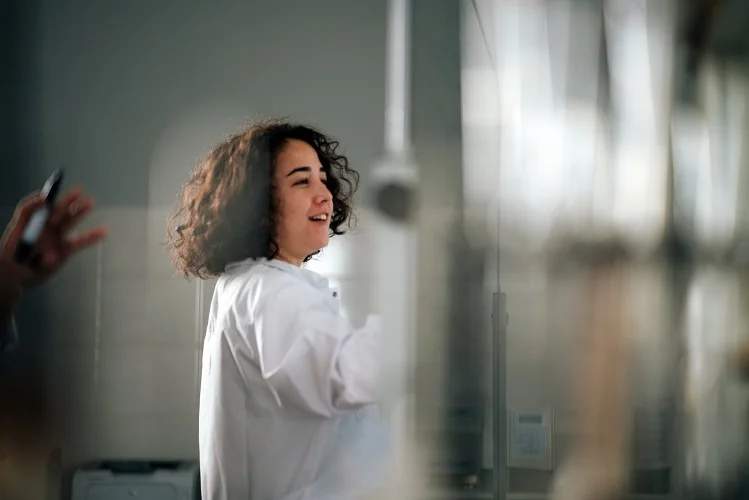
Good Manufacturing Practices
GMPs or good manufacturing practices are performed by food manufacturers. They represent procedures that directly impact the safety of the final food product and involve the people, equipment, processes, and the environment during food production. GMPs are different from standard operating procedures (SOPs) related to individual tasks or routine methods performed during production for specific operations. Implementing GMPs during the manufacturing stage offers a myriad of benefits:
- Reduced number of rejections, returns, or complaints about the finished product,
- Lowered risk of foodborne illnesses,
- Lowered risk of product suspension or recall,
- Reduced product reprocessing,
- Extended shelf and storage life of the food item,
- Compliance with federal and commercial food safety regulations.
So, what are the guidelines for producing and packaging frozen food in a sanitary way? Here is a breakdown of the crucial GMPs.
Facilities and Buildings
To ensure the safety of the final food product, manufacturing facilities must comply with GMP requirements in every single aspect. All building surfaces (walls, ceilings, and floors) have to be smooth, easily cleanable, non-absorbent, non-toxic, and resistant to water and sanitizing agents. Holes or cracks could become a breeding ground for pathogens and pests. All walls must be sealed around equipment part openings and where the wall joins the floor.
The processing and packaging areas must have ceilings that are not secured with nails, screws, or staples. Likewise, any overhead lines or pipes must not be supported with wires, ropes, strings, or tapes. Water accumulation or water leaks are prohibited. The facility floor must have proper drainage and no low spots that could lead to standing water. Doors should be self-closing if they lead to the outside. If an entry has to remain open, it should have an air curtain or a strip door. Every window, ceiling, wall, floor, and electrical box has to be free of dust, rust, webbing, dirt, mold, flaking or peeling paint, contaminants, and food accumulation.
To prevent the accumulation of condensation, bad odors, vapors, or fumes in the facilities, ventilation has to function correctly. It also has to prevent product contamination and be easily cleanable. Dumpsters and waste receptacles must be regularly cleaned to avoid the attraction of pests and reduce foul odors. Food waste and other garbage should be stored and discarded in such a way that prevents contamination of the food product.
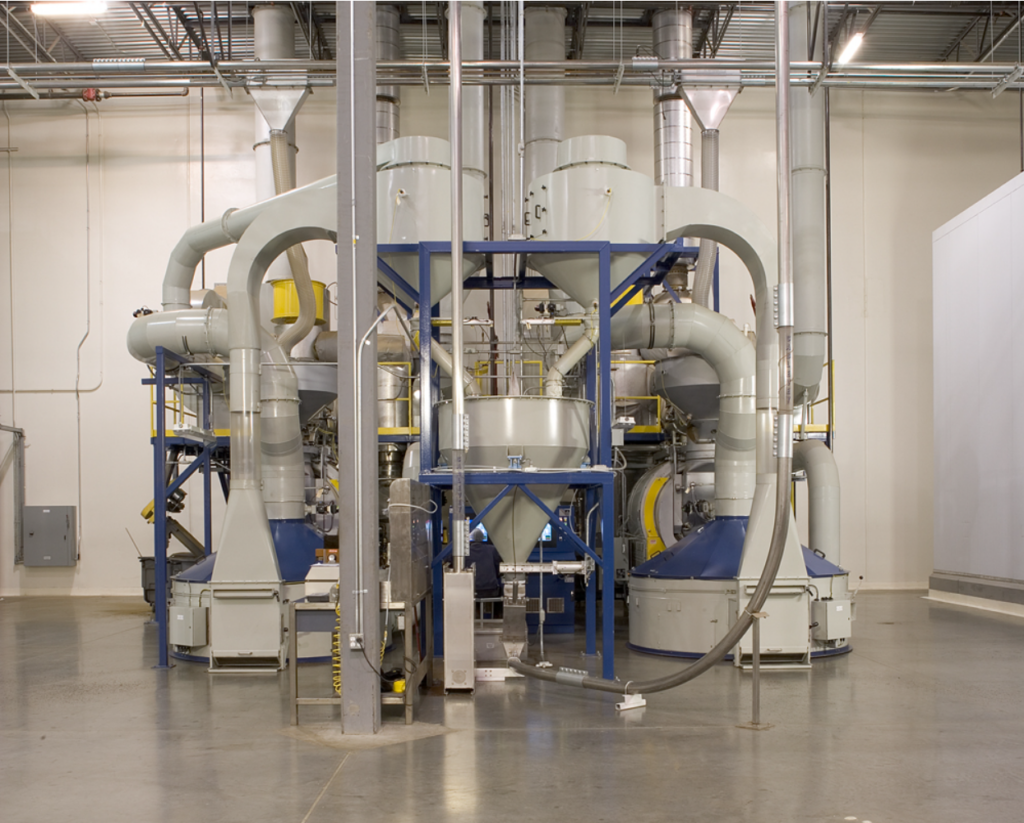
Equipment and Tools
As with all other guidance during the manufacturing process, the main purpose of equipment and tools used in frozen food production is to prevent contamination. All pieces of equipment should be constructed from food-grade, non-absorbent, non-toxic, impenetrable, smooth, and corrosion-resistant materials wherever they come into direct contact with food materials or products. Temporary repair solutions that involve cardboard, wood, wire, tape, or string must not be used. If a piece of equipment breaks down, it should remain out of operation until it is properly repaired.
A conveyor belt system has to meet strict regulatory requirements in the frozen food industry. They should not have any loose string or pieces of rubber, metal clips, or anything that might break away and end up in the food product. Enclosed tube conveyors are one of the best options for transporting food material within the facility.
Cablevey Frozen Food Conveyor Systems ensure low material wastage and keep the food materials clean and safe during conveying. The specialized plastic tubing of Clearvey™ Cablevey conveyor systems also reduces the occurrence of black specks on the product – something relatively common in the use of stainless steel conveyors.
Equipment and utensils should be designed to divert condensation away from food contact surfaces and the product. There should not be any leaks at valves, gaskets, fittings, and similar.
To ensure that everything is in working order, recording charts, thermometers, and pressure gauges should be placed where possible. They must be easily accessible for the employees to check their values. A regular equipment cleaning schedule leads to a safe final product as it reduces bacterial loads. Plant personnel have to be familiar with all cleaning procedures and perform them exactly as outlined in the cleaning manuals. Steel wool or metal sponges must not be used during the cleaning process.
Controls and Processes
Each segment of frozen food production (receiving, segregating, inspecting, preparing, manufacturing, packaging, storing, and transporting) should be covered by the proper sanitation protocols. One or more highly trained individuals should be in charge of quality control and sanitary operations. These supervisors have the responsibility of preventing contamination from any source in any production step. For assessing the effectiveness of established sanitation protocols, regular testing procedures should be implemented. They can include microbial, chemical, or extraneous-material testing.
Physical factors have to be carefully followed to minimize the risk of contamination of food. Along with the physical factors, manufacturing operations should also be monitored to avoid mechanical breakdowns, time delays, or temperature fluctuations that could cause contamination or decomposition of food. They are shown in the table below.
| Physical Factors | Manufacturing Operations |
| Pressure | Refrigeration |
| Temperature | Heat processing |
| Humidity | Acidification |
| Flow rate | Freezing |
| pH values, and similar | Dehydration |
Frozen Food Packaging
The FDA regulates the safety of substances added to food. These substances can be recycled plastics in food packaging, food contact materials, antimicrobial substances, etc. The main goal of frozen food packaging requirements is to prevent the migration of substances from the packaging to the product. If this migration occurs, it might cause a change of composition, taste, and odor and could even lead to food safety hazards and human health deterioration.
The FDA decides whether or not a specific substance can be cleared for food packaging. The agency makes its decision based on analytical chemistry data and how likely it is that the substance will become a public health concern. If there are no toxic side effects (as judged by the FDA), the substance can become part of food packaging.
Basic Requirements
Frozen food packaging must meet the following standards:
- Materials must be able to withstand temperatures down to -40 F but also high cooking temperatures if the product is cooked in its original packaging.
- Materials should be safe and suitable for the purpose. They must not allow the migration of harmful substances into food.
- Food packaging should be of the right mechanical strength and resistant to freezing, sealing, transportation, storage, and even cooking pressure. It should also be resistant to degrading chemicals in the food product, such as different oils or acids.
- Packaging material must not be stored close to pesticides, chemical substances, cleaning compounds, or odorous materials.
- If the product cannot be used all at once, a resealable food container will prevent contamination and slow down food deterioration.
Food Contact Substances
The FDA defines a food contact substance (FCS) as “any substance that is designed to be used as part of the materials involved in the manufacture, packing, packaging, transportation, or storage of food, provided that such use of the substance is not intended to have any technical effect in such food.” FCSs are found in colorants, coatings, adhesives, paper, plastics, antioxidants, and antimicrobials. The FDA evaluates them through a specific program called the food contact notification program.
Food laws dictate that companies that want to supply or manufacture FCSs must submit a Food Contact Substance Notification (FCN) to the FDA. They are obligated to do that even if they are supplying the FCSs only for themselves for producing food contact materials. The FDA has 120 days to respond to the FCN once it’s submitted. If they don’t have any objections to it, or if the time period lapses before the FDA issues a response, the company is allowed to use the FCS in its manufacturing process. However, the submitted FCN applies only to the FCS it mentions and only to the supplier or manufacturer listed in the notification.
FCS Food Additives
FCSs can be food additives. Generally speaking, the FDA recognizes three types of food additives:
- Direct – additives used with an intended technical effect in food.
- Secondary direct – additives used during processing but without a technical effect on the final product.
- Indirect – additives with an intended technical effect not in food but in food contact material.
Given the above-mentioned definition of FCSs, most of them belong to the third category – indirect food additives. However, the FDA recognizes that FCNs related to the second category (secondary direct additives) can also be submitted, as these additives also fall under the definition of FCSs.
Non-Additive FCSs
Food contact substances can be categorized into three primary groups. Firstly, there are substances considered “Generally Recognized as Safe” (GRAS), such as zinc oxide or zinc stearate, which are commonly used in packaging materials. These substances achieve their GRAS status based on the general opinion of the scientific community and the amount of information available about them.
Secondly, we have “Prior-Sanctioned” substances, which are FDA-approved for use in food contact materials prior to 1958. A well-known example of this category is PVC. Finally, there are “No-Migration” substances, which can become food contact substances if a company can demonstrate that they do not migrate into the food. The no-migration criterion typically involves a migration threshold level of fewer than 50 parts per billion (ppb), although this threshold may vary depending on the specific type of substance in question.

Food Transportation Standards
Food safety doesn’t stop with the finished, packaged frozen food product ready to be distributed. The product also has to be kept safe during transportation, storage, and distribution – contamination can technically occur at any of these stages as well.
Regulations that protect food from contamination are established by the FDA Food Safety Modernization Act (FSMA) on Sanitary Transportation of Human Foods. This Act covers who is responsible for safety during the transportation of food, what the main problem areas are, and what the flexibility of the regulations means for supply chain participants.
Main Problem Areas
Food transport leads to contamination in a variety of ways, primarily due to the potential exposure of food products to unfavorable environmental conditions during transit. Here are the main problem areas:
- Improper temperature control – temperature abuse,
- Inadequate holding practices – poor product throughput and rotation, delayed holding, leaving the product unattended,
- Improper use of bulk material handling equipment of loads that have been rejected, returned, reworked, destined for disposal, or reworked,
- Poor employee hygiene and insufficient employee and driver food safety training,
- Owners, managers, and supervisors with insufficient food safety knowledge,
- Inadequate food safety policies during transport and storage,
- Poor pest control during transport and storage,
- Improper sanitation, inadequate loading and unloading practices, raw materials sitting on loading docks after hours, transporting mixed loads, and similar,
- Poor pallet quality or incorrectly used packing materials,
- Improper vehicle cleaning, wastewater disposal, not maintaining wash records,
- Poorly maintained transportation and storage units – gaps, leaks, accumulation of condensation or ice, and more,
To solve these problem areas and more, the FDA recommends key requirements for safe food transportation.
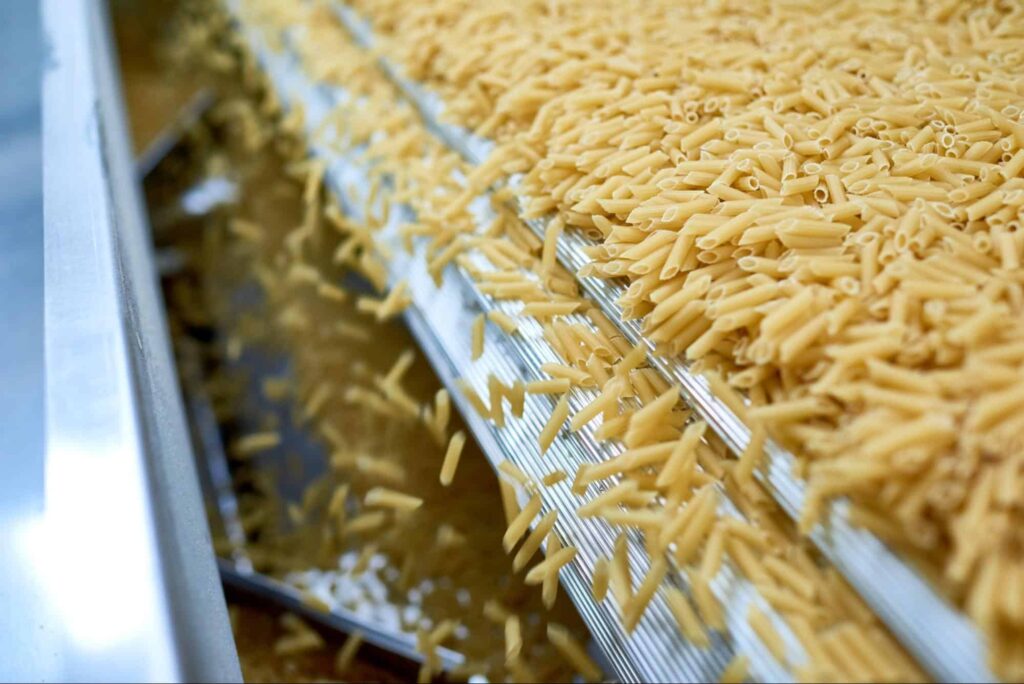
Key Requirements
Addressing all these challenges and implementing rigorous food safety measures are essential to ensure the integrity and safety of food products as they move through the supply chain. But let’s explore the key requirements you will need in order to transport food safely.
Every frozen food product must be kept at a suitable temperature – each vehicle or piece of transportation equipment must be able to maintain this temperature at all times. The vehicles and equipment have to be suitable, easily cleanable, and must not jeopardize food safety in any way.
Raw food must not be in contact with food that is ready to eat, food items should be separated from non-food items, and temperature controls should be regularly performed. These operations are just examples of measures to guarantee food safety during transportation. The ultimate goal, as mentioned above, is to prevent cross-contamination, accidental incorporation of food allergens, and similar.
Every supply chain participant – loaders, shippers, carriers, and receivers – is responsible for training their personnel in food safety. Sanitary transportation practices are imperative, and good communication between employees and their supervisors is essential.
Supply chain participants should keep written records of any procedures, agreements, and training for up to 12 months from when the procedure was implemented, the agreement signed, or the training performed. The exact retention period of these documents depends on the record type.
Flexibility of Food Transportation Regulations
Even though the FDA developed a strict set of rules regarding food safety in transport, it did not propose any mandatory solutions to these rules. This means that companies are allowed to implement whatever methods work best for them as long as they meet the FDA’s food safety standards.
For example, temperature control regulation can be approached in different ways. Suppliers can choose a refrigerated trailer, or they can go for insulated coolers or containers with ice. The FDA only wants its requirements fulfilled in a safe and sanitary way – it is up to each food business to decide how they will go about it. This flexibility of the regulations is unusual, but it offers a lot of freedom to organizations involved in food transport.
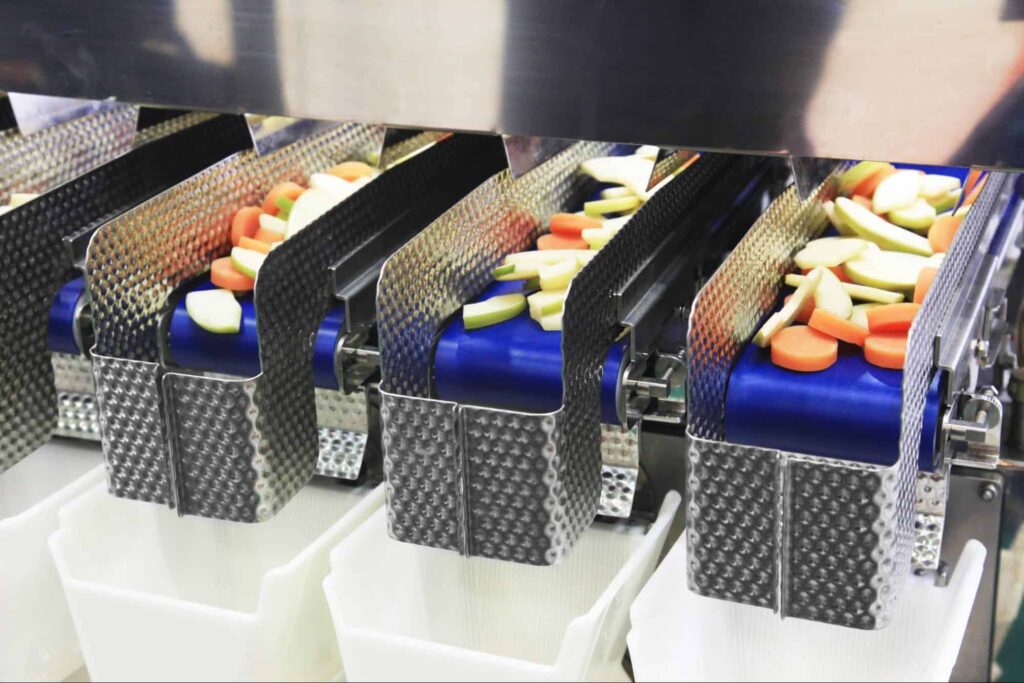
Comprehensive Sanitary Compliance Guide for Frozen Food Processing and Packaging
By outlining the crucial points regarding good manufacturing practices, frozen food packaging requirements, and food transportation standards, we’ve only scratched the surface of sanitary compliance guidelines for the frozen food industry. The fact is that specifics will be different depending on the type of product you’re manufacturing. Your food contact material must be able to withstand food ingredients that could cause degradation, and your facilities should be adapted to the type of material you’re conveying and processing.
Make sure that your production plant is up to standards – everything needs to be in top condition. Walls, floors, ceilings, windows, doors, equipment, and conveyor systems – there is no room for even the slightest error or source of contamination in the food industry. Your vehicles and transportation systems (or those of your shippers and carriers) should adhere to the same sanitation standards as your production facilities. The primary reason for such uncompromising standards is to reduce the spread of foodborne illnesses and protect the consumers’ health.

Cablevey Conveyors Is Your Solution to Ensure Food Safety
At Cablevey, we understand the critical importance of maintaining the highest standards of food safety in the frozen food industry. Our state-of-the-art enclosed conveyor systems are designed with precision and innovation to ensure that your food products remain protected and free from any risk of contamination during transportation within your facility.If you feel that your belt conveyor system deserves an upgrade, reach out to Cablevey Conveyors. We have solutions for a plant of any size and can create a custom conveyor belt for food that meets all the food safety requirements. With our enclosed industrial conveyor belt for warehouse or product processing, you won’t have to worry about contamination in your production processes.


